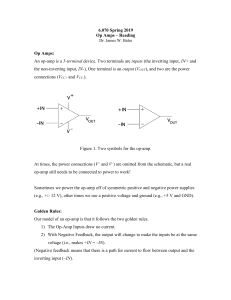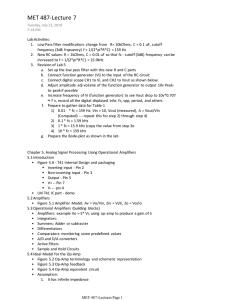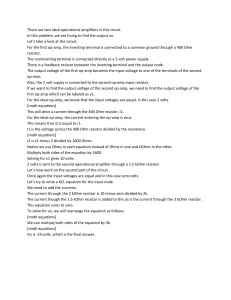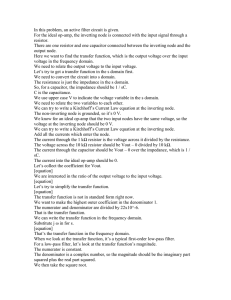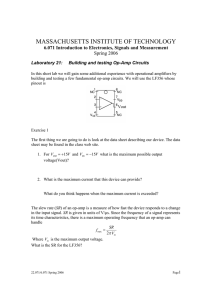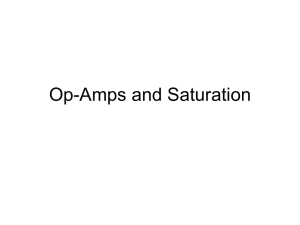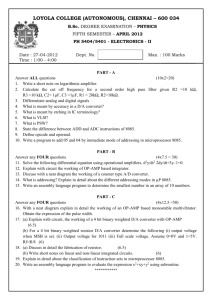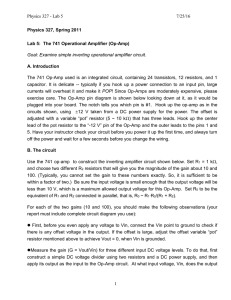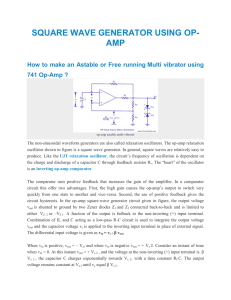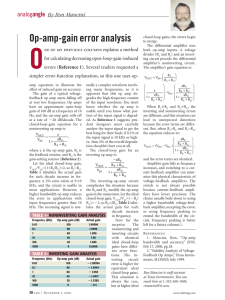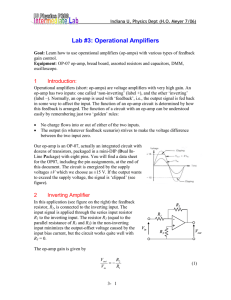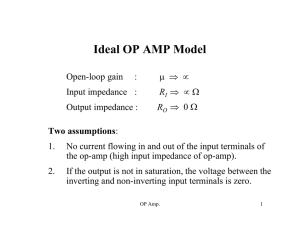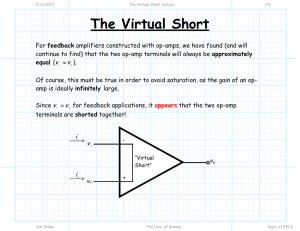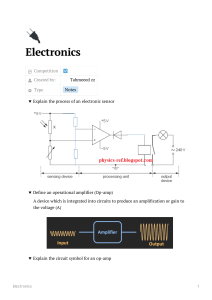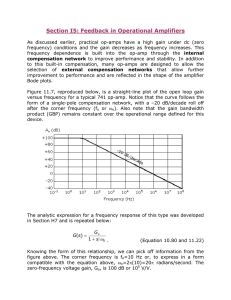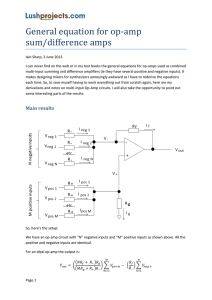PH 325 Electronics 2. MJM May 5 2005
advertisement
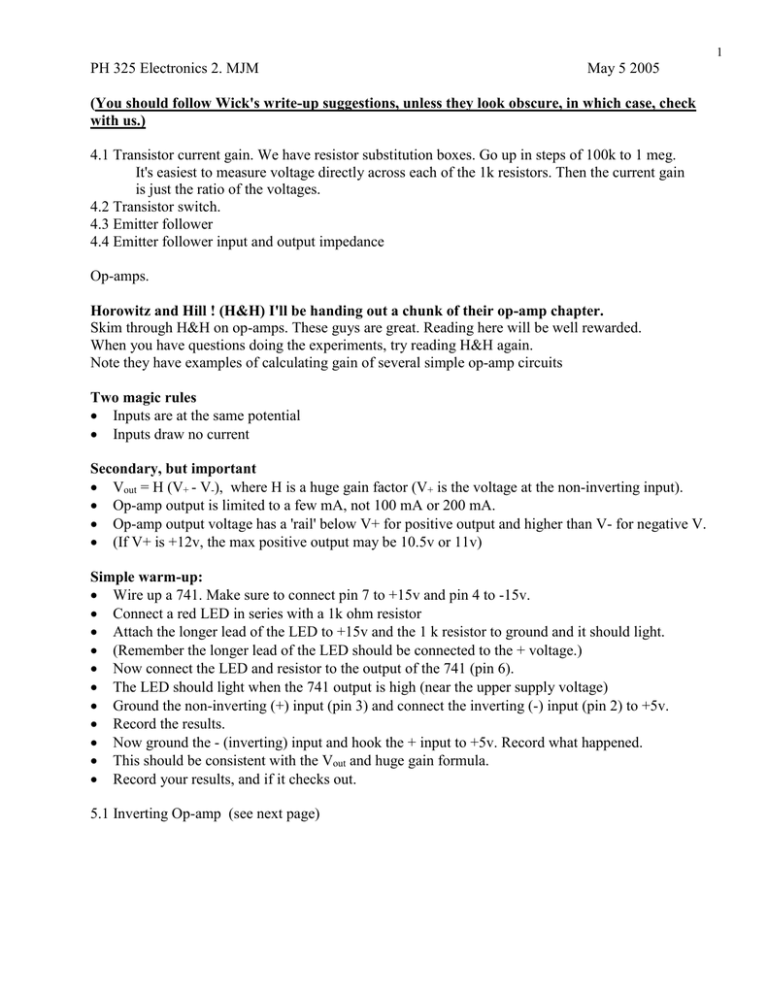
1 PH 325 Electronics 2. MJM May 5 2005 (You should follow Wick's write-up suggestions, unless they look obscure, in which case, check with us.) 4.1 Transistor current gain. We have resistor substitution boxes. Go up in steps of 100k to 1 meg. It's easiest to measure voltage directly across each of the 1k resistors. Then the current gain is just the ratio of the voltages. 4.2 Transistor switch. 4.3 Emitter follower 4.4 Emitter follower input and output impedance Op-amps. Horowitz and Hill ! (H&H) I'll be handing out a chunk of their op-amp chapter. Skim through H&H on op-amps. These guys are great. Reading here will be well rewarded. When you have questions doing the experiments, try reading H&H again. Note they have examples of calculating gain of several simple op-amp circuits Two magic rules Inputs are at the same potential Inputs draw no current Secondary, but important Vout = H (V+ - V-), where H is a huge gain factor (V+ is the voltage at the non-inverting input). Op-amp output is limited to a few mA, not 100 mA or 200 mA. Op-amp output voltage has a 'rail' below V+ for positive output and higher than V- for negative V. (If V+ is +12v, the max positive output may be 10.5v or 11v) Simple warm-up: Wire up a 741. Make sure to connect pin 7 to +15v and pin 4 to -15v. Connect a red LED in series with a 1k ohm resistor Attach the longer lead of the LED to +15v and the 1 k resistor to ground and it should light. (Remember the longer lead of the LED should be connected to the + voltage.) Now connect the LED and resistor to the output of the 741 (pin 6). The LED should light when the 741 output is high (near the upper supply voltage) Ground the non-inverting (+) input (pin 3) and connect the inverting (-) input (pin 2) to +5v. Record the results. Now ground the - (inverting) input and hook the + input to +5v. Record what happened. This should be consistent with the Vout and huge gain formula. Record your results, and if it checks out. 5.1 Inverting Op-amp (see next page) 2 5.1 Inverting op-amp As you go thru 5.1 take careful notes of what's going on. A lot of interesting stuff here. slew rate input resistance output resistance ( Put a 50-ohm resistor across the output. I was surprised by what happened. See if you can explain this effect. In the end, it's pretty much ohm's law.) effect of frequency and signal amplitude on performance 5.2 Non-inverting op-amp 5.3 Follower 5.4 Integrator You can use 1 megohm instead of 4.7 megohms. Also do do a sine wave input at 500 Hz. I messed up measuring Vout/Vin because I had one channel AC coupled and the other DC coupled, so don't repeat this mistake. Show that Vout/Vin for a sinusoid input Vo exp(i t) is Vout/Vin = i/( RC) Where he asks (5.4.4) about the role of the megohm resistor, read H&H p. 223 5.5 Comparator 6.1 Summing Amplifier (this is discussed in H&H too, p. 185). 6.2 Current to voltage converter. MRD 300 or other phototransistor will be fine. [H&H p. 184] Chapter 8, pp. 54, 55. Build and check what's there. Use the UGN 3503 Hall sensor to build a circuit which will light an LED no matter which way you bring a magnet up next to it. (The 3503 output is about 2.55 v when run from +5v. It goes up or down at about 1.25 mV/gauss depending on the direction of the magnetic field.) [This will be one of the required projects.] If time permits, I will do a demo and we will take some data on the power MOSFETs that you know and love. We will check the square law given in in H&H p. 121. This is all we will attempt to do with FETs.
